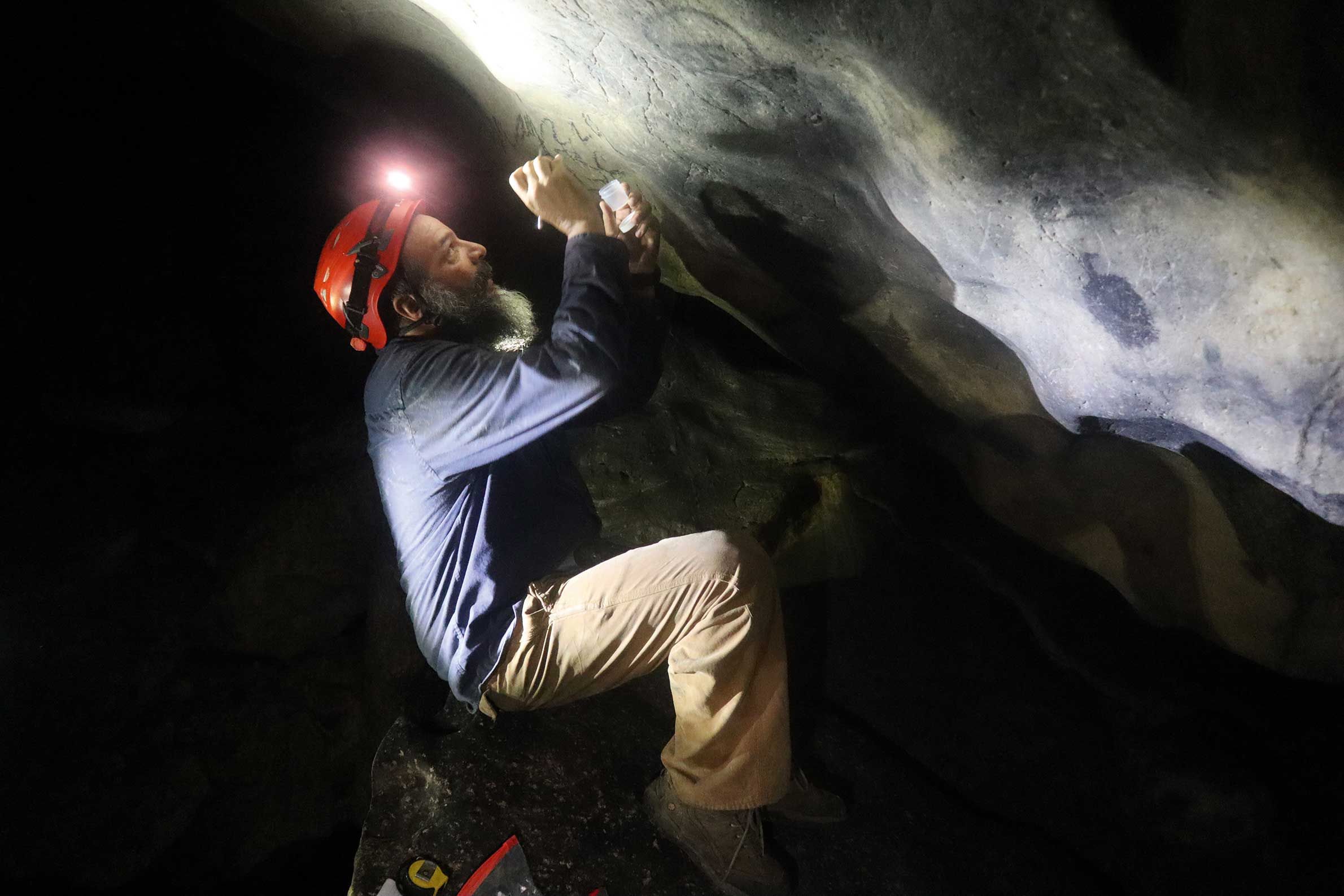Welcome to DU!
The truly grassroots left-of-center political community where regular people, not algorithms, drive the discussions and set the standards.
Join the community:
Create a free account
Support DU (and get rid of ads!):
Become a Star Member
Latest Breaking News
General Discussion
The DU Lounge
All Forums
Issue Forums
Culture Forums
Alliance Forums
Region Forums
Support Forums
Help & Search
Latin America
Related: About this forumHow ancient cave art is rewriting Puerto Rican history
Recent study shows that humans inhabited and made art in the archipelago thousands of years earlier than previously thought
Gabriella Angeleti
14 March 2024

The archaeologist Reniel Rodríguez Ramos examines a pictograph in a cave in Puerto Rico. Some of the drawings have been dated to as early as 740BC
Courtesy Reniel Rodríguez Ramos/University of Puerto Rico at Utuado
A groundbreaking study of ancient cave paintings in Puerto Rico has pushed back the record of precolonial cultures on the archipelago. Some of the oldest pictographs sampled date to between 740BC and 400BC—centuries before Spanish colonisers contended that the Native population first settled there.
The archaeologist Reniel Rodríguez Ramos and the geophysicist Angel A. Acosta-Colon studied 11 karstic caves on La Isla Grande, Puerto Rico’s main island. They collected pigments from 61 pictographs, hoping to form a clearer timeline of humans in the area. “Although there have been extensive efforts to record the rock art that has been discovered in Puerto Rico and the Caribbean, until now there was no good information on their chronology,” Rodríguez Ramos tells The Art Newspaper. “The chronology was based on formal typologies—or how these images visually changed through time. But there was not enough information to determine when particular traditions began.”
It was previously thought that rock art in Puerto Rico, which includes pictographs, petroglyphs and pyroglyphs, started after 600AD. Spanish colonisers held that the Taíno population—largely decimated following the Spanish conquest in 1493—had arrived on the island just 500 to 1,000 years earlier, according to Rodríguez Ramos.
“For a long time, researchers believed that the Taíno were the only living culture here prior to the invasion of the Spaniards,” Rodríguez Ramos says. “Through extensive archaeological research, we have determined that people were living in Puerto Rico for thousands of years prior to the Spaniards’ arrival.” He adds that the new findings “rewrite the idea that the Spaniards killed off all the Indigenous people on the island”, reinforcing the anthropological argument that the Taíno were not extinct but rather merged with African and Hispanic cultures, as evidenced in cave drawings made well after colonisation. The research further “allows for a greater understanding of how our earliest ancestors viewed the world and what was important to them”, Rodríguez Ramos says.
The study also found that rock art did not cease after Puerto Rico was first colonised. Some of the most recent pictographs sampled date to the 18th century. One particularly striking example is a 16th-century image that resembles a lion, which prompted some experts to speculate that the painting could have been made by an enslaved African brought to Puerto Rico who would have seen a lion first-hand. However, Rodríguez Ramos explains that the so-called lion “could also have been a solar representation”, as similar examples exist at other sites in the Caribbean. “The idea that African people were creating their own rock art is something that must be studied, since there are examples in the Virgin Islands, Cuba and Hispaniola,” Rodríguez Ramos adds.
More:
https://www.theartnewspaper.com/2024/03/14/how-ancient-cave-art-is-rewriting-puerto-rican-history
InfoView thread info, including edit history
TrashPut this thread in your Trash Can (My DU » Trash Can)
BookmarkAdd this thread to your Bookmarks (My DU » Bookmarks)
0 replies, 448 views
ShareGet links to this post and/or share on social media
AlertAlert this post for a rule violation
PowersThere are no powers you can use on this post
EditCannot edit other people's posts
ReplyReply to this post
EditCannot edit other people's posts
Rec (6)
ReplyReply to this post